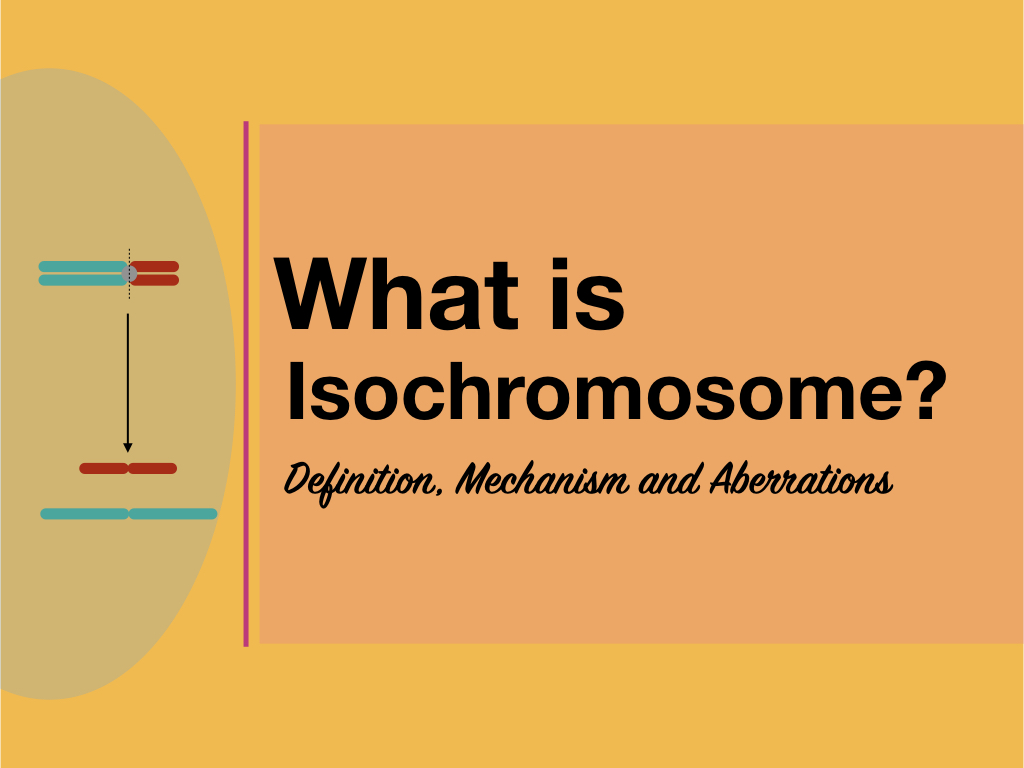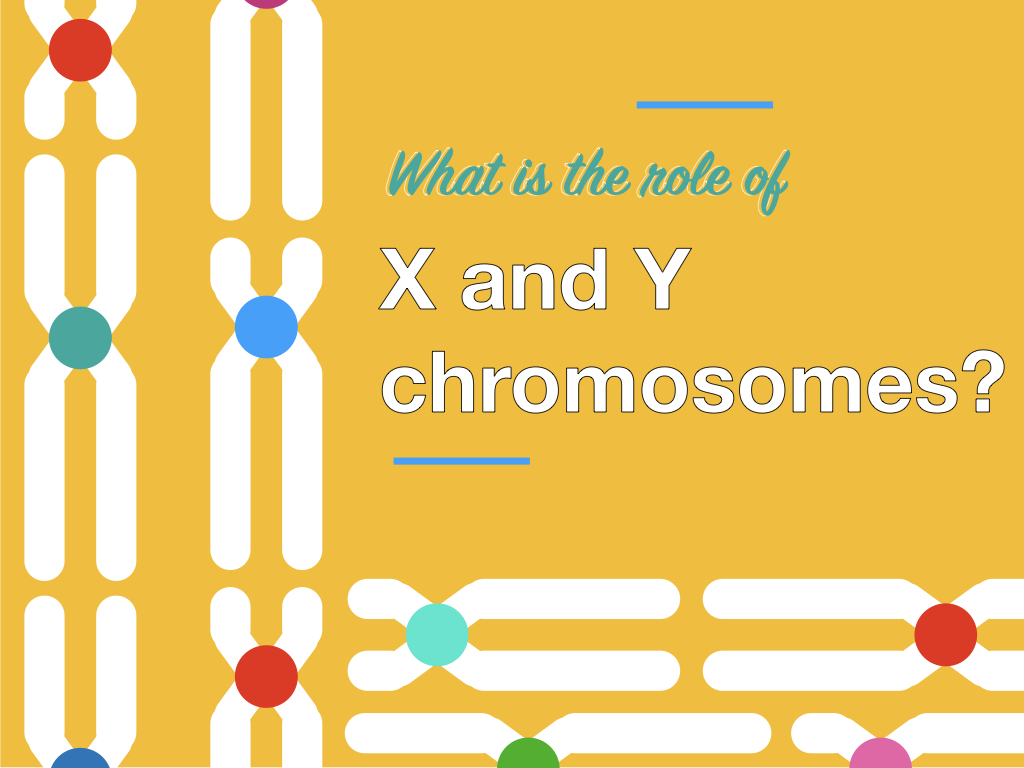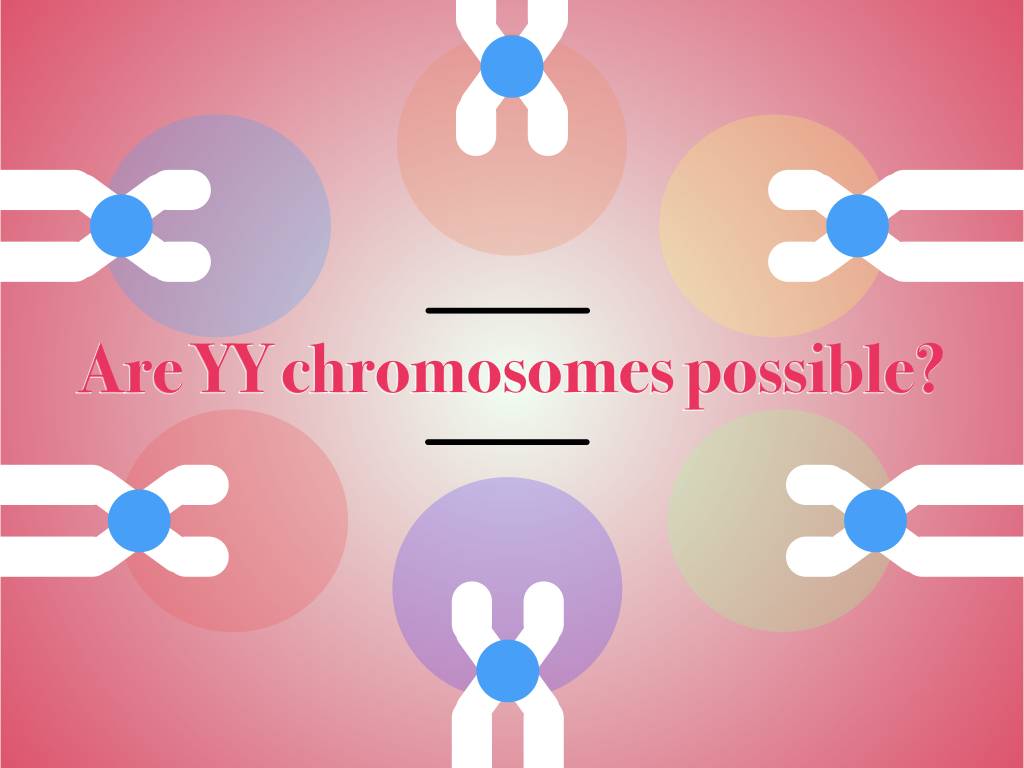“Isochromosome occurs by two common events simultaneously duplication of entire one arm and loss of another one. It causes various chromosomal aberrations.
On this website, we are covering interesting articles especially focusing on cytogenetic, karyotyping, chromosomes and related abnormalities. Our cytogenetic expert team collects and shares every piece of information possibly present or not.
We also share our experiences and ‘some tips’ that no one tells us. Here is another interesting and yet powerful article, less explored, isochromosome, we will discuss all the likely knowledge.
Isochromosome is an unusual and rare chromosomal abnormality that occurs in a single chromosome due to two events simultaneously, duplication and deletion.
Structurally, chromosomes collect all DNA interacting with histones and cytologically, it is made up of arms, centromere and telomeres.
Karyotyping is a basic and conventional technique to examine chromosomes, however, some rare anomalies like the isochromosome can’t be detected correctly.
Here in the present article, I will share information on isochromosome, what it is and how to detect it. We will further look into the mechanism possible causes it and some common isochromosome abnormalities.
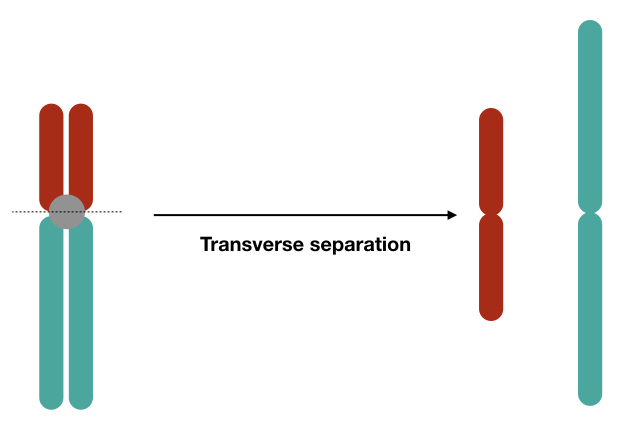
What is an isochromosome?
In 1966, Jacobs and Ross reported the first case of isochromosome in the Y chromosome. Because the condition is so rare, less published data are available to date. [Read further: Are YY Chromosomes Possible?]
Noteworthy, the exact mechanism of the present condition is still not known but U-shape strand exchange and centromere misdivision are two possible reasons for it.
Mechanism:
It is believed that isochromosome may occur during the cell division phase, either meiosis or mitosis during pre-meiotic gametes, meiotic cell division and postzygotic cell division. In this section, we will explain two of the most common mechanism of isochromosome formation.
U-type strand exchange:
The U-type strand exchange is the common yet complicated mechanism of forming the isochromosome, first see the image below,
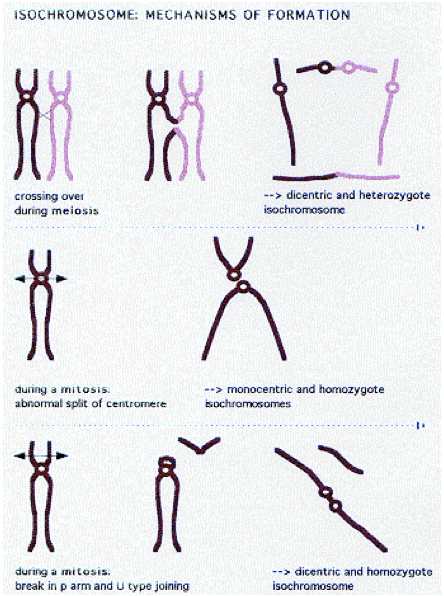
The U-shape strand exchange occurs during the anaphase of either cell division process when sister chromatids break and fuse, creating a U-shaped structure. Ultimately in manufacture isodicentric* chromosomes because chromatids which are involved in this, each have a centromere.
*Isodicentric- having two centromere present but undistinguishable.
Centromere misdivision:
Another uncommon and less known mechanism significantly involved in forming isochromosomes is the misdivision of the centromere.
During the metaphase when chromatids separate, centromere divide longitudinally. But when it divides transversely, an isochromosome is formed. It happens perpendicular to the long axis of the chromosome.
The resulting chromosomes are isodicentric much like those are formed via the U-type strand exchange.
Sister chromatids are identical, almost, means similarly. When misdivision occurs two ‘p’ and ‘p’ arms and two ‘q’ and ‘q’ arms fuse, having identical genetic material and loss of genetic material on respective arms.
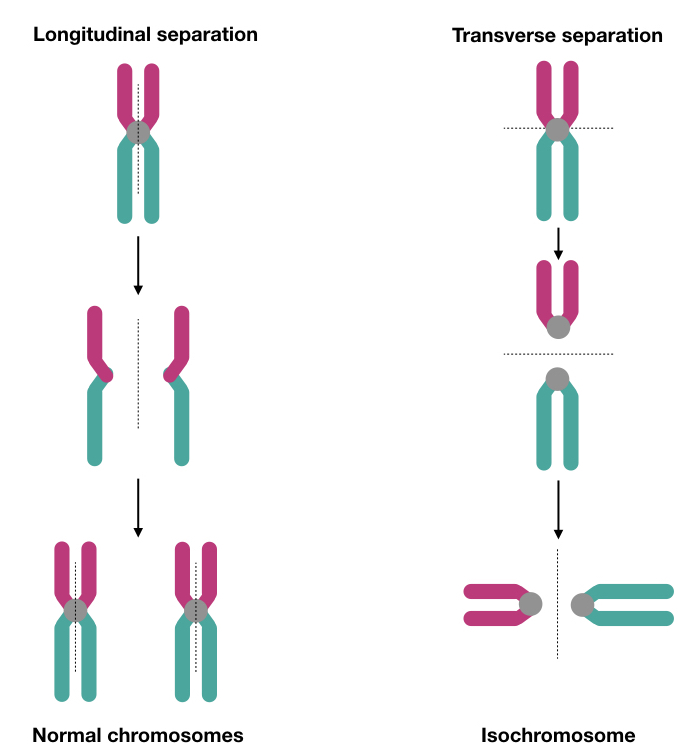
Definition:
“Uncommon error of cell division; misdivision or U-shape strand exchange results in duplication of genetic material on one arm and loss of genetic material on another arm that causes a type of chromosome referred to as isochromosome.”
Scientific data suggest that isochromosome formation occurs more commonly in acrocentric chromosomes 13, 14, 15, 21 and 22. However, the isochromosome of X is commonly found.
The mechanism causes serious health problems and one of the most lethal types of chromosomal aberration or mutation. and can be detected using cytogenetic techniques like FISH or microarray. MLPA can be used as well.
Note that though it’s a mirror-chromosome, as having identical arms, isochromosomes have only a single centromere while *isodicentric have two centromeres, each from fused chromatid or chromosome.
However, another centromere isn’t active (only a single from a pair is active) such type of condition is known as pseudodicentric.
Read more: History of Karyotyping and Cytogenetics.
Cytological indication:
Cytologically, the isochromosome is denoted as “i”. For example, i(13q) means isochromosome of 13 on the q arm. ISCN suggests “i” to denote the isochromosome anomaly.
However, as it is more complex in nature, the nomenclature is complex too. See some examples here,
46,X,idic(Y)(peter→q12::q12→pter)- it indicates a male with isodicentric chromosome occurring from q12. It is also written as 46,X,idic(Y)(q12).
Now let me explain this condition by commenting below,
46,X,i(X)(q10). ?
Related article: ISCN- International System for Human Chromosome Nomenclature for Karyotyping.
Structure of isochromosome:
Structurally, the isochromosome or isodicentric chromosomes look-alike to normal metaphase or small metaphase chromosomes and that why can’t be studied using the conventional cytogenetic technique.
It forms two identical chromosomes if it occurs in metacentrics like the X chromosome, if it occurs in an acrocentric chromosome, one large metacentric and one smaller chromosome forms. Most importantly having identical arms.
In the case of isodicentric or dicentric chromosomes, although another centromere can’t be visible normally but is present as a small constrict. Again only expert eyesight can see it. As we said, another centromere remains suppressed.
Related article: Metacentric, Acrocentric and Telocentric Chromosomes.
Consequences:
Although the present condition is a rare case scenario and not so common unlike other chromosomal abnormalities, the consequences are lethal and very dangerous.
At a molecular level, some deformative abnormal events happen. When isochromosome forms, two events occur simultaneously, the first loss of genetic material of one arm and second duplication of the genetic material of another arm.
At the gene level, genes on one arm loss while genes on another arm duplicates. Which means the entire gene regulation mechanism altered.
Expression profile of genes located on the lost arm decreases while the expression profile of genes located on the duplicated arm increases, resulting in epigenetic dysregulation of gene expression.
Simply put, some genes can’t form a protein (lost) while other forms more protein (duplication). Let’s take it more in-depth if you wish to.
A portion of chromosomes having repetitive, satellite and noncoding DNA which helps in gene regulation and controlling epigenetics. If an isochromosome happens that portion also becomes unbalanced and can’t perform its functions normally.
Overall, there are way more lethal, unknown and serious consequences, vary from case to case in the case of isochromosome condition. Cancer is one of the most common conditions that occur due to varied types of isochromosomes.
Now let’s check out some of the common iso chromosomal conditions.
Related article: What is Chromosomal Translocation?- Definition, Mechanism and Types.
Isochromosome disorders
Isochromosome 12:
Not so common but common in this category is the Pallister-Killian syndrome or isochromosome 12. Other names are Killian syndrome, PKS, Teschler-Nicola Killian syndrome, Isochromosome 12p syndrome. Tetrasomy 12p, mosaic iso12p.
The present condition was reported and studied by Pallister, Teschler-Nichla and Killian in 1977 and 2003 independently.
It’s a tetrasomy of chromosome 12 that occurs by an extra copy of the p arm of the same chromosome which results in an isochromosome. The condition is mostly mosaic and occurs during the germ cell differentiation by random event (either misdivision of centromere or U-shape exchange).
The present condition isn’t inherited but the duplication of genetic material causes serious health issues.
Sparse hair and scalps, abnormally located eyes, folding of skin over the inner corner of the eyes, high forehead, highly arched palate, broad nasal bridge, weak muscle tone are common symptoms.
Noteworthy, the condition affects both males and females equally but originate from the maternal side. Only 150 cases reported worldwide to date.
Note: maternal age has a significant role in occurring the events that lead to isochromosome.
Isochromosome 18:
Isochromosome 18 causes tetrasomy of 18 much like the i(12) which occurs 1in 1,80,000 liveborn worldwide (rarest of the rare case). Isochromosome 18p occurs through the random event during cell division, some cases are inherited too and are maternally originated much like the iso(12).
Broadly phenotypic changes observed in the present condition are hypertonia, dysmorphic features, mental retardation and microcephaly.
Isochromosome X:
The isochromosome condition causes some types of mosaic Turner syndrome as well. Here the entire one X chromosome got lost in their genetic material.
Note that the frequency of isochromosome X is reported up to 18% in case of Turner syndrome. The signs and symptoms of the condition vary depending upon the type of isochromosome either mosaic or pure or any other.
Isochromosome Y:
The postzygotic pericentromeric break of the Y chromosome causes isochromosome Y, 46,X,i(Yq), cytologically. Varied level of infertility and other problems related to this condition.
Isochromosome 21:
As we said, acrocentric chromosomes are more prone to fuse and form the isochromosome. Besides trisomy 21 as the major cause of Down Syndrome, isochromosome 21 is yet another genetic factor that causes the same.
However, the event occurs randomly much like the trisomy and causes different degrees of mental retardation.
Isochromosome 17q:
One of the reasons for myeloid malignancy is the isochromosome 17q or 46,XX,i(17q). The mechanism of abnormal distribution of chromatid is the same as explained above in which the p arm gets lost and the q arm duplicated, resulting in three q arms and a single p arm.
The present condition is more or less associated with various types of tumor such as chronic myeloid leukemia, Hodgkin’s and non-Hodgkin lymphoma, acute myeloid leukemia, myelodysplastic syndrome, lymphoid leukemia etc.
Note: In less than 1% of myeloid neoplasms isolated isochromosome 17q is reported.
It is also noted that not only i(17q) but other gene mutations are also involved in the present condition.
List of other isochromosome disorders:
| Sr No | Cytological indication | Note |
| 1 | idic(1)(p12) | Burkitt Lymphoma (*) |
| 2 | i(2p) or i(2q) | Maternal uniparental disomy (*) |
| 3 | +i(3)(q10) | Persistent polyclonal B-cell lymphocytosis (*) |
| 4 | i(4)(p) | Myeloid malignancies (*) |
| 5 | i(5)(p10) | Acute Myeloid leukemia (*) |
| 6 | i(6)(p10) | Acute lymphoblastic leukemia (*) |
| 7 | i(7)(q10) | Myeloid malignancies (*) |
| 8 | idic(7)(q11.2) | Acute myeloid leukemia (*) |
| 9 | i(8)(q10) | ALL- Acute lymphoblastic leukemia (*) |
| 10 | i(8)(q10) | Acute myeloid leukemia (*) |
| 11 | i(9)(p10) | Myeloid malignancies, acute lymphoblastic leukemia and lymphomas (*) |
| 12 | i(9q) | Precursor B-cell lymphoblastic leukemia (*) |
| 13 | i(13)(q10) | Child-onset schizophrenia, ABHD and motor tic disorder |
| 14 | i(14)(q) | Leukemia with dysplastic features (*) |
| 15 | i(14)(q) | Refractory anemia (*) |
| 16 | i(14q) | Trisomy 14-growth retardation, narrow palpebral, low-set ears, short neck ect. (*) |
| 17 | i(15q) | Uniparental isodisomy. Morbid obesity and Variant PWS. (*) |
| 18 | i(18)(q10) | Diffuse large B-cell lymphoma. (*) |
| 19 | i(22)(q10) | Chronic and acute myeloid malignancies (*) |
Detection of isochromosome:
The present condition is a type of chromosomal aberration, however, conventional karyotyping isn’t enough to interpret the condition. Even experts can’t rectify the condition using karyotyping.
Techniques like FISH (Fluorescent in situ hybridization), chromosome microarray, MLPA (Multiple Ligation Dependent Probe Amplification) and FQ-PCR are used often.
It is commonly observed in various types of tumor and hematological malignancies. Scientific studies suggest that i(17q) don’t originate due to random events in cell division but by the susceptibility in the genome stucture.
The region duplicated, is 17p11.2 having poor-copy repeats and larger palindromic sequences.
Karyotyping:
Duplication and loss of genetic material can be investigated by observing chromosomes microscopically. Cell cultured based technique karyotyping includes steps of cell metaphase arrest, cell harvesting and staining & banding.
Either GTG and/or C banding or combination of both along with the FQF banding can be used.
[Related article: What is Karyotyping?- Definition, Steps, Process, and Advantages.]
FISH:
FISH is more reliable and accurate in detecting the isochromosome. Here the chromosome region-specific fluorophore-labeled probes are allowed to hybridize with the chromosome regions.
If it can hybridize on the chromatids, indicating the isochromosome formation. Denaturation and washing steps are also involved in the present technique. Besides, a state of the art, high-resolution microscopy system is needed to interpret results.
Microarray:
Yet another hybridization based technique is the microarray or chromosome microarray. Here plenty of fluorescent probes are immobilized on the glass plate to allow hybridization with the chromosome region.
A computer software collects and interprets the final results.
MLPA:
Multiplex Ligation dependent Probe Amplification allows ligation of probe and amplification using the region-specific primer set on the target sequence.
Quantitative analysis helps to investigate the duplication or deletion of chromosome arms or regions or DNA sequence.
Which technique to use depends on the researcher, some done it through only karyotyping while others do it using FISH and microarray.
Conclusion:
Isochromosome is the rarest event occur among all type of chromosomal aberrations, although the consequences are too bad. There are so less cases reported worldwide in which the isochromosome is involved, still, in cancer it’s role is more significant.
I hope this article helps you a lot. Comment below and let us know how like this information.
Sources:
- Kanagal-Shamanna R, Luthra R, Yin CC, et al. Myeloid neoplasms with isolated isochromosome 17q demonstrate a high frequency of mutations in SETBP1, SRSF2, ASXL1 and NRAS. Oncotarget. 2016;7(12):14251-14258.
- Bilhou-Nabera, C. i(17q) in myeloid malignancies. Atlas Genet Cytogenet Oncol Haematol. 2000;4(1):27-28.
- Gole L, Lian NB, Lian NP, Rauff M, Biswas A, Choolani M. Prenatal detection of isochromosome 21 by QF-PCR. A comparison between FISH and traditional karyotyping. Fetal Diagn Ther. 2008;24(1):47-50. doi: 10.1159/000132406. Epub 2008 May 27. PMID: 18504381.
- Yakut S, Sanhal C, Manguoglu E, Cetin Z. Prenatal diagnosis of isochromosome 21p and isochromosome 21q in a fetus with Down syndrome. Genet Couns. 2014;25(3):257-64. PMID: 25365847.
- Rizelle and Barrenas reported 26 causes of 46,X,i(Xq) in the case of Turner syndrome. (S. Rizell, M.-L. Barrenäs, A. Andlin-Sobocki, C. Stecksén-Blicks, H. Kjellberg, Turner syndrome isochromosome karyotype correlates with decreased dental crown width, European Journal of Orthodontics, Volume 34, Issue 2, April 2012, Pages 213–218).
- (Hemmat M, Hemmat O, Boyar FZ. Isochromosome Yp and jumping translocation of Yq resulting in five cell lines in an infertile male: a case report and review of the literature. Mol Cytogenet. 2013;6(1):36. Published 2013 Sep 10. doi:10.1186/1755-8166-6-36)
